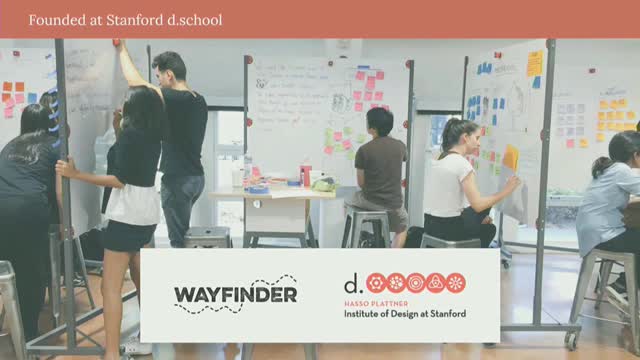Wayfinder program expands purpose-based curriculum to 2500 schools serving one million students
July 28, 2025 | Battle Ground School District, School Districts, Washington
This article was created by AI summarizing key points discussed. AI makes mistakes, so for full details and context, please refer to the video of the full meeting. Please report any errors so we can fix them. Report an error »

In a recent special meeting of the Battle Ground School District Board of Directors, discussions centered around the implementation of the Wayfinder program, which aims to enhance student engagement and purpose in education. The meeting provided an overview of Wayfinder's origins, its growth, and its focus on developing future-ready skills among high school students.
Wayfinder, founded in 2015 at Stanford University, has expanded significantly, now serving approximately 2,500 schools and reaching around one million students. The program was developed in response to a growing concern about student disengagement, with a particular emphasis on helping adolescents connect their personal interests and future aspirations to their current educational experiences. The program's core philosophy is rooted in the idea that fostering a sense of purpose is essential for student motivation and success.
The curriculum focuses on "durable skills" that remain relevant regardless of technological advancements. These skills include collaboration, problem-solving, resilience, and critical thinking—attributes that employers increasingly seek in new hires. The program's emphasis on goal-setting is designed to help students understand the connection between their immediate academic responsibilities and their long-term ambitions.
During the meeting, the presenters highlighted the importance of adapting educational approaches to meet the developmental needs of adolescents. They noted that engaging high school students requires activities that resonate with their experiences and aspirations, avoiding methods that may seem trivial or disconnected from their realities.
The Wayfinder program is unique in that it began with a focus on high school students before expanding to include younger grades, responding to requests from school districts for a comprehensive K-12 curriculum. This adaptability is seen as a key strength of the program, allowing it to be implemented in various educational settings, from full classrooms to one-on-one counseling sessions.
As the Battle Ground School District considers the integration of Wayfinder into its curriculum, the board members expressed interest in how the program could enhance student outcomes and prepare them for future challenges. The meeting concluded with a commitment to further explore the implementation plan and its potential impact on the district's educational framework.
Overall, the discussions at the meeting underscored a proactive approach to addressing student engagement and readiness for the future, aligning educational practices with the evolving demands of the workforce and society.
Wayfinder, founded in 2015 at Stanford University, has expanded significantly, now serving approximately 2,500 schools and reaching around one million students. The program was developed in response to a growing concern about student disengagement, with a particular emphasis on helping adolescents connect their personal interests and future aspirations to their current educational experiences. The program's core philosophy is rooted in the idea that fostering a sense of purpose is essential for student motivation and success.
The curriculum focuses on "durable skills" that remain relevant regardless of technological advancements. These skills include collaboration, problem-solving, resilience, and critical thinking—attributes that employers increasingly seek in new hires. The program's emphasis on goal-setting is designed to help students understand the connection between their immediate academic responsibilities and their long-term ambitions.
During the meeting, the presenters highlighted the importance of adapting educational approaches to meet the developmental needs of adolescents. They noted that engaging high school students requires activities that resonate with their experiences and aspirations, avoiding methods that may seem trivial or disconnected from their realities.
The Wayfinder program is unique in that it began with a focus on high school students before expanding to include younger grades, responding to requests from school districts for a comprehensive K-12 curriculum. This adaptability is seen as a key strength of the program, allowing it to be implemented in various educational settings, from full classrooms to one-on-one counseling sessions.
As the Battle Ground School District considers the integration of Wayfinder into its curriculum, the board members expressed interest in how the program could enhance student outcomes and prepare them for future challenges. The meeting concluded with a commitment to further explore the implementation plan and its potential impact on the district's educational framework.
Overall, the discussions at the meeting underscored a proactive approach to addressing student engagement and readiness for the future, aligning educational practices with the evolving demands of the workforce and society.
View full meeting
This article is based on a recent meeting—watch the full video and explore the complete transcript for deeper insights into the discussion.
View full meeting
